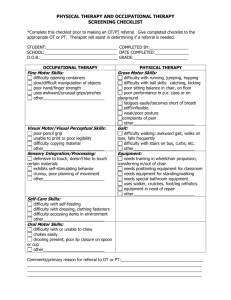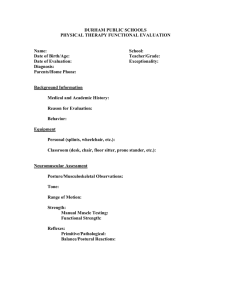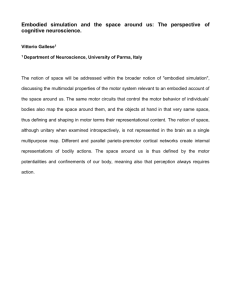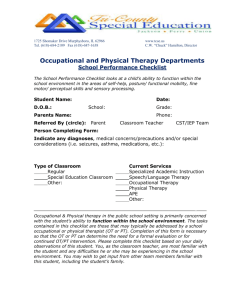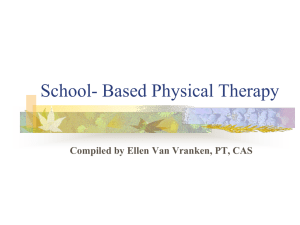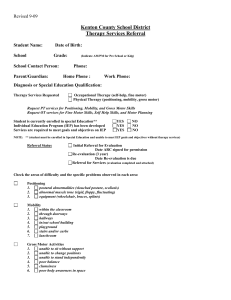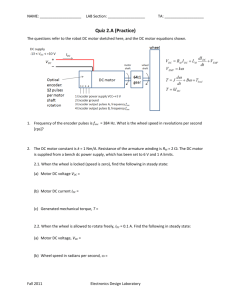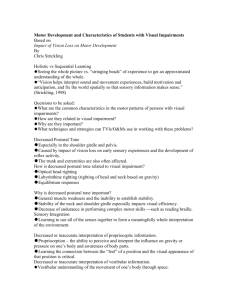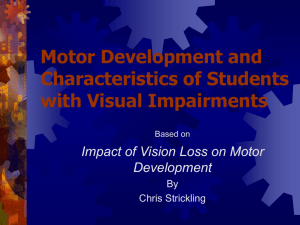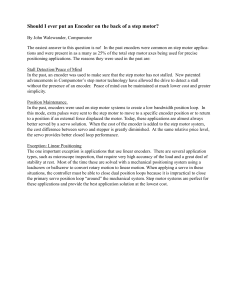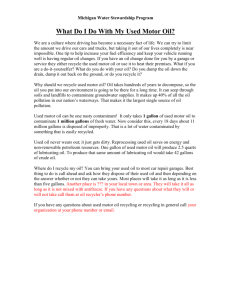Early Intervention to Preschool Transition Checklist
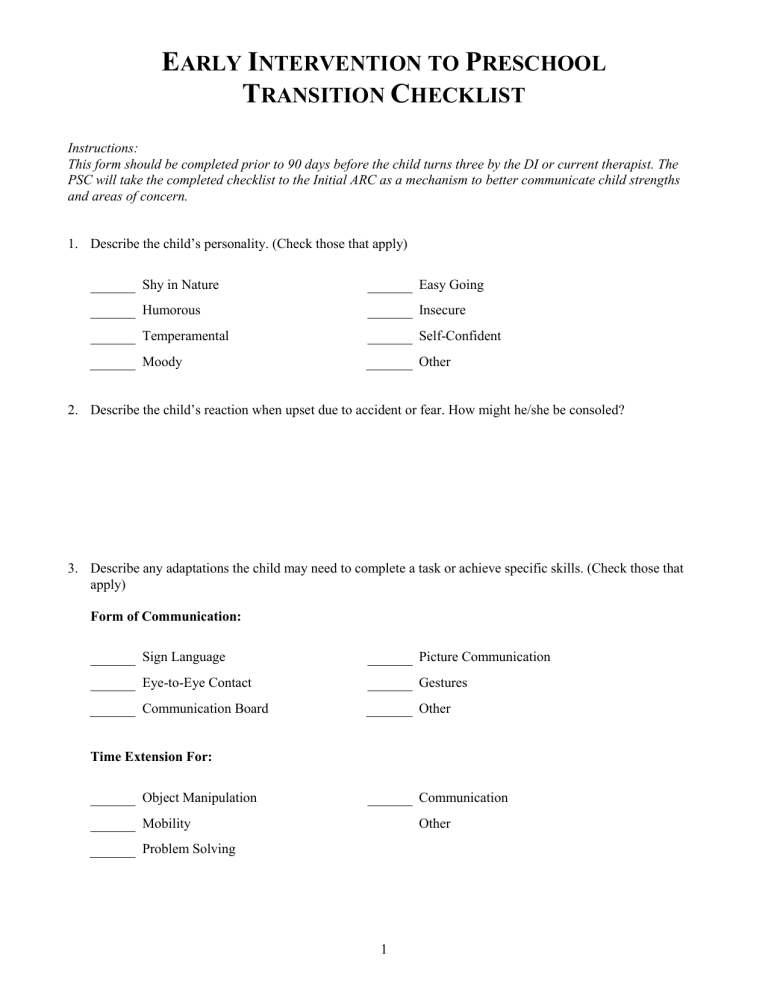
E
ARLY
I
NTERVENTION TO
P
RESCHOOL
T
RANSITION
C
HECKLIST
Instructions:
This form should be completed prior to 90 days before the child turns three by the DI or current therapist. The
PSC will take the completed checklist to the Initial ARC as a mechanism to better communicate child strengths and areas of concern.
1.
Describe the child’s personality. (Check those that apply)
Shy in Nature Easy Going
Humorous
Temperamental
Moody Other
2.
Describe the child’s reaction when upset due to accident or fear. How might he/she be consoled?
3.
Describe any adaptations the child may need to complete a task or achieve specific skills. (Check those that apply)
Form of Communication:
Sign Language Picture Communication
Eye-to-Eye Contact
Communication Board
Gestures
Other
Time Extension For:
Object Manipulation
Mobility
Communication
Other
Problem Solving
Insecure
Self-Confident
1
Specialized Equipment for Positioning to Obtain Optimal Learning:
Stander
Wheelchair
Chair (with or without tray)
Wedges
Bolster
Mat
Walker
Potty Chair
Table
Other
____ Yes ____ No Videotape is available for viewing showing child/positioning techniques
(check one)
Assistive Technology to Obtain Optimal Learning:
Switches
Musical Activities
Tactile Stimulation Activities
Other
Light Activities
4.
List activities of special interest to the child.
5.
List activities that the child dislikes.
6.
Describe the child’s behavior and observations as to how child copes with routine change. (How often does it occur, how long does it last, and how is it dealt with?)
Appropriate or inappropriate behavior depending on the age of the child:
Tantrums:
2
Behavior changes that occur due to medication and list current medications:
Other:
7.
Describe the child’s motivation factors in detail. (Example: toys, food, music. What kinds and how is it used when working with the child)
8.
Developmental areas of concern. (Be specific)
Cognitive:
Social Emotional:
Self-Help:
Gross Motor:
Fine Motor:
Language: (Be specific. Examples: expressive, receptive, verbal, non-verbal, or combination, sign language)
9.
The learning mode that best describes the child. (List specific skills and activities)
Visual:
Tactile:
3
Auditory:
Combination:
10.
The child’s attending skills are greater in the areas of: (List the types of activities)
Problem Solving:
Dramatic Play:
Object Manipulation:
Gross Motor Activities:
Fine Motor Activities:
11. Check the type of play skills that best describes the child.
Independent Play Social Play
Parallel Play
12.
Has the child attended:
Home based programs
Other
____ Yes ____ No
Center based programs ____ Yes ____ No
13.
Any food allergies? Any medicine allergies? Allergic to stings?
14.
Other comments that may provide relevant educational information concerning the child regarding health, nutrition or other factors.
4
Developed by: Peggy McKenzie, Tina M. Badgett, Janet Barry, Pathways, Inc.
Adapted by: Brenda Mullins, Kentucky Early Childhood Transition Project , 1997
5
